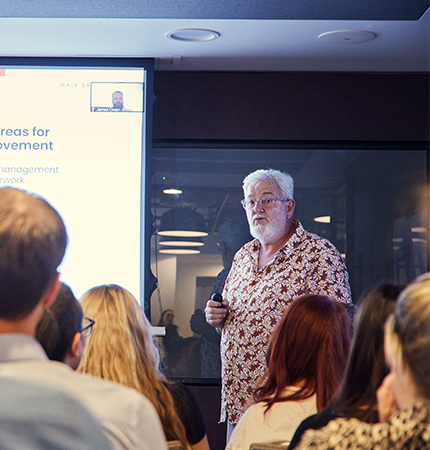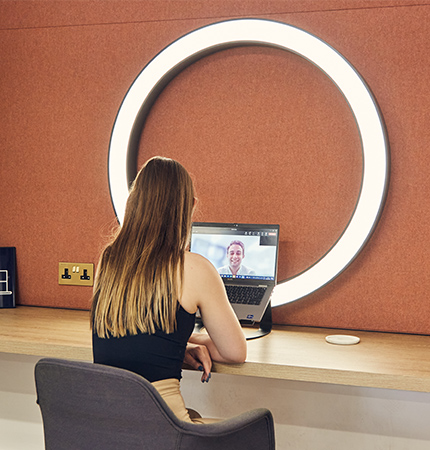
Sign up to our newsletter.
Stay up to date on the latest in workplace design & build. Sign up to our newsletter for useful advice, information and inspiration from the world of workplace.

In the absence of regular human interaction and as a way to foster relationships between colleagues, businesses have been experimenting with how best to build social capital, for a whole year. With a new blended approach to working looking set to stay for the foreseeable future, building and maintaining social capital within organisations is crucial. Inspired by a 2003 study that looked at the different types of digital infrastructure that can be used to strengthen bonds and build social capital, we wanted to share five ways to maintain and build social capital in a hybrid setting.
Many businesses already hold weekly whole business update meetings, team updates or issue regular newsletters. Mobilising an internal communications network is now more important than ever to ensure remote workers feel involved in the drive towards overall business objectives. It also provides an opportunity for employees to connect with their colleagues, build relationships and collaborate on various projects. Digital platforms or intranets can be used to foster cultural connections too. Whether it’s promoting virtual events or sharing informal information among teammates, such as popular books or shows enjoyed by your colleagues.
Social translucence refers to digital systems that make our online activities and presence visible to one another, meaning we can remain connected while working remotely. Thankfully, apps such as Zoom or Teams can help with this, with icons to show your availability. Encouraging staff to update their status to ‘busy’ when doing focused work, ‘away from the desk’ when on a break and ‘available’ when able to chat, can help set some boundaries between work and breaks. Additionally, encouraging teams to add an image to their company profile adds a touch of humanism feel that there is another real person on the other side of the screen. However, this should also coincide with encouragement to take wellbeing breaks regularly to avoid employees feeling as though they always have to show an online presence.
It is common business etiquette to praise a co-worker for hard work done in the office, perhaps in passing - however sending an email specifically to praise someone is less of a norm. But it is practices like these that should be incorporated into our day –to-day now more than ever, so that people benefit from the feeling of inclusion even when working remotely. Sharing business success stories in company communications can also increase feelings of collective efficacy, enabling feelings of inclusion and purpose, while contributing to a shared belief and mentality within a business.
Putting in place continuous mechanisms for interactions such as drop-in virtual events, organised team catch-ups or even a group chat to keep in contact with co-workers should be factored in the work day. Regular communication can increase feelings of belonging and community. In the post-pandemic world, encouraging whole team days in the office occasionally should be prioritised.
This will be particularly important for new starters entering into a workplace virtually, with a lack of physical interaction with their colleagues at the moment. Consider a personalised welcome email sent out to the whole company, which focuses on getting to know a person more so you can start building links between employees. Encourage people to reach out to new employees virtually, this will help to build relationships and for new staff to feel valued by their colleagues.





Your workplace holds enormous potential to improve your business performance. Get in touch today, and we will unlock that potential together.